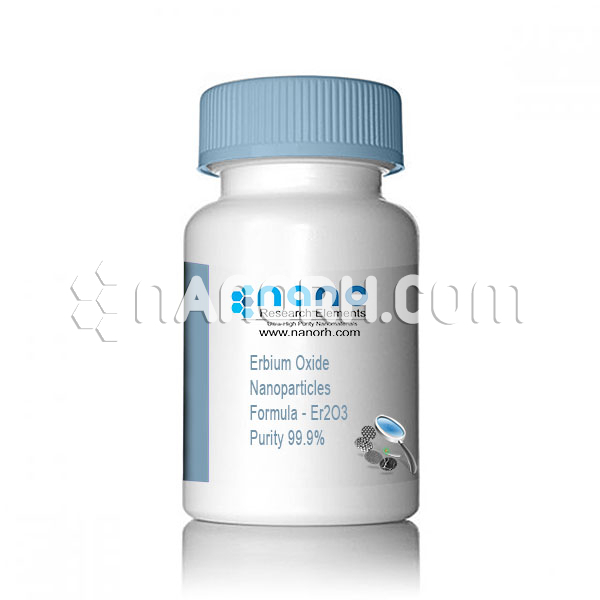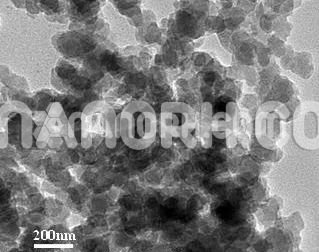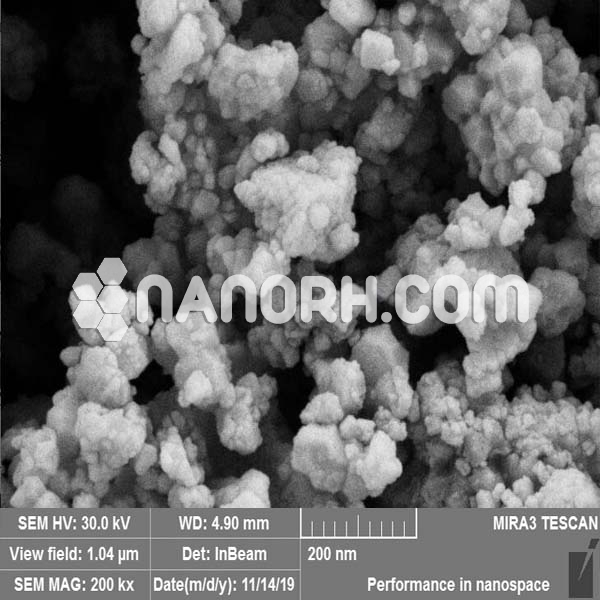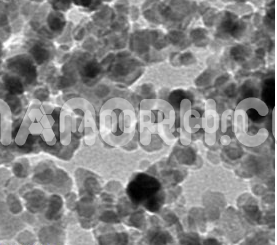| Erbium Oxide Nanoparticles | |
| Product Number | NRE-3070 |
| CAS No. | 12061-16-4 |
| Formula | Er2O3 |
| Molecular Weight | 382.56 / g/mol |
| APS | <100 nm (Can be Customized) |
| Purity | 99.9% |
| Colour | Light Pink |
| Density | 8.64 g/cm³ |
| Melting Point | 2,344 °C |
| Boiling Point | 3,290 °C |
Erbium Oxide Nanoparticles
Applications
Optoelectronics and Photonics
Optical Amplifiers and Lasers: Erbium is well-known for its use in optical amplifiers, particularly in erbium-doped fiber amplifiers (EDFA), which are widely used in telecommunications. When erbium oxide nanoparticles are used in these devices, they help to enhance the efficiency of signal amplification in optical fibers. Their ability to emit light at specific wavelengths (especially in the infrared range) makes them crucial for long-distance communication.
Laser Technology: Erbium oxide nanoparticles are also used in solid-state lasers, particularly for materials that operate at wavelengths around 1.5 µm, which is ideal for telecommunications and other optical applications. Erbium-doped laser materials provide high efficiency and low threshold lasing, making them useful in a range of photonic applications.
Energy and Environmental Applications
Solar Cells: Erbium oxide nanoparticles are being researched for use in solar energy devices such as photovoltaic cells. Their ability to absorb light and enhance energy conversion efficiency makes them a potential material for improving the performance of solar cells.
Catalysis and Environmental Remediation: Erbium oxide nanoparticles act as catalysts in various chemical reactions, including those in energy storage and environmental remediation processes. They are used for applications like the catalytic oxidation of pollutants and the removal of organic contaminants from wastewater, where their large surface area and reactivity improve the efficiency of these processes.
Carbon Dioxide Reduction: Due to their high surface reactivity, Er₂O₃ nanoparticles are being explored for use in CO₂ reduction technologies. They can potentially play a role in carbon capture and conversion, helping mitigate the environmental impact of carbon emissions.
Biomedical Applications
Bioimaging: The unique optical properties of Erbium oxide nanoparticles, particularly their ability to emit light in the infrared spectrum, make them valuable for bioimaging and fluorescence imaging. They can be used as contrast agents for enhanced imaging in medical diagnostics, providing higher resolution and deeper tissue penetration compared to conventional imaging agents.




